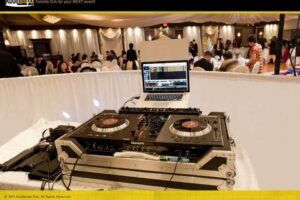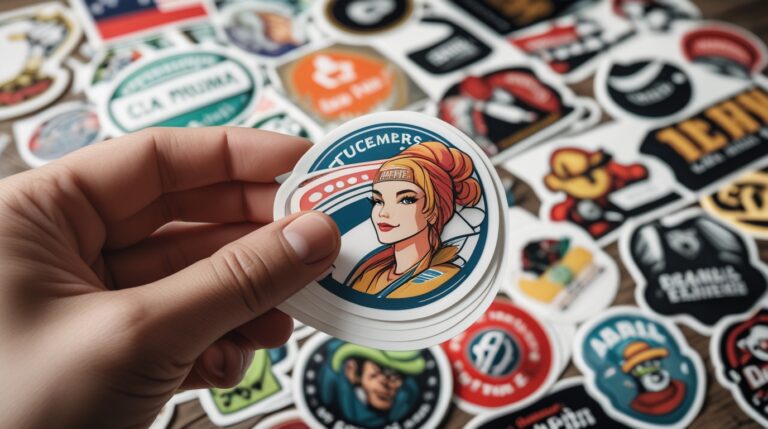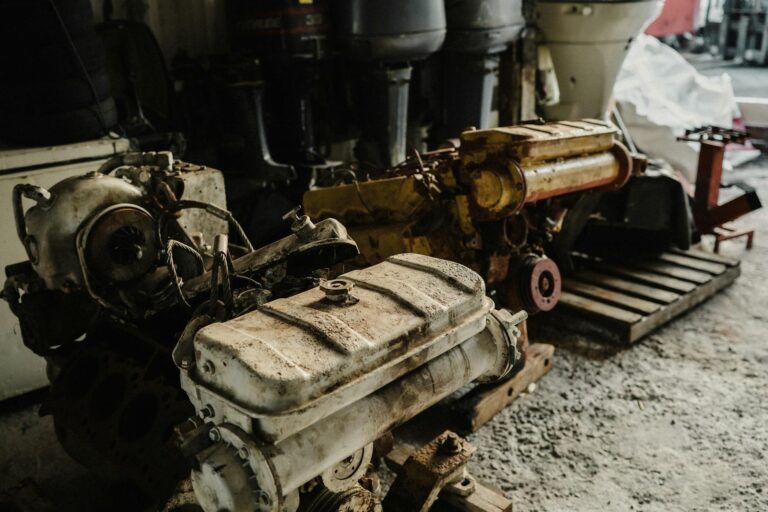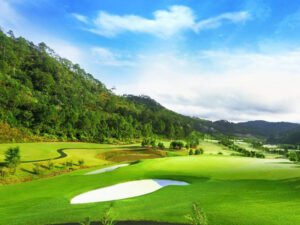Introduction
Paddle boarding is an increasingly popular activity in the UK, offering a unique and versatile way to explore the nation’s diverse waterways. From the serene lakes of the Lake District to the rugged coastlines of Cornwall, paddle boarding provides an intimate connection with nature while offering a full-body workout. As the sport continues to grow in popularity, the range of available paddle boards has expanded, offering something for everyone. In 2024, the choices are vast, and selecting the right paddle board is crucial to ensure a safe and enjoyable experience, particularly given the UK’s variable climate and conditions.
Types and Categories of Paddle Boards
Inflatable vs. Hard Boards
Inflatable Paddle Boards (iSUPs)
Inflatable paddle board is an excellent choice for those who value portability and storage convenience. Made from durable PVC materials, they can be deflated and rolled up into a compact size, making them easy to transport. iSUPs are ideal for those with limited storage space or who frequently travel. Despite being inflatable, they are incredibly robust and can provide a performance level similar to hard boards when fully inflated.
Hard Paddle Boards
Hard paddle boards, also known as epoxy or rigid boards, are crafted from materials like fiberglass, carbon fiber, or plastic. They offer superior performance in terms of speed and maneuverability, making them the preferred choice for activities such as surfing and racing. However, they are bulkier and require more storage space, which can be a consideration for some users.
All-Around Boards
All-around boards are versatile and designed for various conditions and activities, from flat water paddling to small wave surfing. They typically feature a balanced shape that provides stability and ease of use, making them ideal for beginners and recreational paddlers.
Touring Boards
Touring boards are designed for longer distances and extended paddling sessions. They are typically longer and narrower than all-around boards, offering better tracking and speed. These boards are perfect for exploring rivers, lakes, and coastal areas, providing a smooth and efficient glide.
Racing Boards
Racing boards are built for speed. They are long, narrow, and have a pointed nose, allowing them to cut through the water with minimal resistance. These boards are typically used in competitive settings and are best suited for experienced paddlers looking to maximize their speed.
Surfing Boards
Surfing paddle boards are shorter with a more pronounced rocker, allowing them to handle waves effectively. They offer enhanced maneuverability and are designed for those looking to catch waves and perform tricks.
Yoga Boards
Yoga paddle boards are designed with a wide and stable platform to facilitate yoga poses on the water. They typically feature a soft, non-slip deck pad that provides comfort and grip, making them perfect for yoga enthusiasts looking to take their practice to a serene, aquatic setting.
Fishing Boards
Fishing paddle boards are equipped with features such as rod holders, tackle storage, and mounts for various accessories. They are stable and can support extra weight, making them ideal for anglers who want to combine fishing with paddling.
Multi-Person Boards
These boards are designed to accommodate multiple paddlers, making them perfect for families or groups. They are larger and more stable, offering ample space and stability for several people to paddle together.
Key Features to Consider
Board Size and Volume
The size and volume of a paddle board significantly impact its stability, speed, and maneuverability. Larger boards are generally more stable but slower, making them ideal for beginners and activities like yoga. In contrast, smaller boards are faster and more agile, suitable for racing and surfing.
Weight Capacity
Weight capacity is a crucial consideration, especially for larger paddlers or those planning to carry additional gear. A board’s weight capacity ensures it can support the paddler’s weight and any extra equipment without compromising performance.
Stability and Balance
Stability is particularly important for beginners and those engaging in activities like yoga or fishing. Wider boards provide greater stability, while narrower boards offer better speed and maneuverability.
Construction Materials
The materials used in a board’s construction affect its durability, weight, and performance. Common materials include:
- PVC: Used in inflatable boards, it’s lightweight and durable.
- Fiberglass: Offers a good balance of weight and strength, commonly used in hard boards.
- Carbon Fiber: Lightweight and strong, ideal for high-performance boards.
Fin Setup
Fins play a crucial role in a board’s stability and tracking. Common setups include:
- Single Fin: Simple and effective for straight tracking.
- Three Fins (Thruster): Offers a mix of stability and maneuverability, great for surfing.
- Four Fins (Quad): Provides excellent grip and control on waves.
Deck Pad
A comfortable, non-slip deck pad enhances stability and grip, which is particularly important for activities like yoga or in wet conditions. It also provides cushioning for your feet during long paddling sessions.
Carry Handles
Carry handles are essential for transporting the board to and from the water. Most boards have a central carry handle, while larger or multi-person boards may feature additional handles on the sides.
Attachment Points and Accessories
Many boards come with attachment points for accessories like bungee cords, fishing gear, or cameras. These features add versatility and allow you to customize your board for specific activities.
Color and Design
While not directly impacting performance, the color and design of your board can reflect your personal style. Bright colors can also enhance visibility on the water, adding a safety element.
Paddle Board Specifications
Length
The length of a paddle board affects its speed and maneuverability. Longer boards are faster but harder to turn, making them suitable for racing or touring. Shorter boards are more maneuverable and better for surfing or general use.
Width
Width impacts a board’s stability and speed. Wider boards are more stable and ideal for beginners or activities requiring balance, such as yoga. Narrower boards are faster and better suited for experienced paddlers.
Thickness
Thickness contributes to a board’s volume and buoyancy. Thicker boards can support more weight, making them ideal for larger paddlers or those carrying gear.
Weight
The weight of a board affects its portability and ease of handling. Lighter boards are easier to transport and maneuver, while heavier boards may offer more stability in the water.
Volume
Volume measures the board’s buoyancy and load capacity. It’s a crucial factor in determining how well a board will float under a given weight.
Paddle Types and Specifications
Fixed vs. Adjustable Paddles
Fixed Paddles
Fixed paddles are set to a specific length and are generally lighter and more rigid. They are ideal for paddlers who know their preferred paddle length and want a consistent feel.
Adjustable Paddles
Adjustable paddles can be resized, making them versatile for different paddlers or activities. They are a great option for families or those who want flexibility.
Materials: Aluminum, Fiberglass, Carbon Fiber
Aluminum
Aluminum paddles are affordable and durable but tend to be heavier. They are a good choice for beginners or recreational paddlers.
Fiberglass
Fiberglass paddles offer a balance of weight and durability. They are lighter than aluminum and provide good performance for most paddling conditions.
Carbon Fiber
Carbon fiber paddles are the lightest and most expensive option. They offer the best performance and are preferred by serious paddlers and racers.
Blade Shape and Size
The blade shape and size affect the paddle’s power and efficiency. Larger blades provide more power per stroke but require more effort, while smaller blades are easier to handle and better for a high-cadence paddling style.
Shaft Design
Shaft design can include ergonomic shapes and grips, making the paddle more comfortable to use. Some shafts are designed to reduce vibration, offering a smoother paddling experience.
Additional Gear and Accessories
Leashes
A leash is a safety device that attaches the paddler to the board, preventing it from drifting away if they fall off. Leashes are essential for all paddle boarding activities, especially in open water or surf.
PFDs (Personal Flotation Devices)
PFDs are crucial for safety, providing buoyancy and keeping you afloat in the water. In the UK, wearing a PFD is often a legal requirement, especially for beginners and in certain conditions.
Pumps
For inflatable paddle boards, a pump is necessary for inflation. Manual pumps are lightweight and easy to transport, while electric pumps offer convenience and speed.
Bags and Storage Solutions
Bags protect your paddle board during transport and storage. For inflatable boards, backpacks are available, making it easy to carry the board and accessories.
Repair Kits
A repair kit is essential for fixing minor damages, especially for inflatable boards. Kits typically include patches, glue, and instructions for quick fixes.
Environmental Considerations
Eco-friendly Materials
As environmental awareness grows, many paddle board manufacturers are adopting eco-friendly materials and processes. These include using recycled plastics, bio-resins, and sustainable wood.
Impact on Marine Life
Choosing non-toxic materials and responsible paddling practices can minimize harm to marine ecosystems. Avoiding sensitive areas and respecting wildlife are important aspects of eco-friendly paddle boarding.
Sustainable Practices in Manufacturing
Brands focusing on sustainable practices reduce their environmental footprint through measures like using renewable energy, reducing waste, and ensuring fair labor practices.
Budget and Pricing
Price Ranges for Different Boards
Paddle boards vary widely in price based on materials, design, and brand. Entry-level boards are generally more affordable, while high-performance models can be quite expensive.
Cost of Accessories and Gear
In addition to the board, consider the cost of essential accessories like paddles, leashes, and PFDs. Quality gear can enhance your paddle boarding experience and safety.
Maintenance and Repair Costs
Regular maintenance, such as cleaning and proper storage, is essential to prolong the life of your board. Be prepared for potential repair costs for damages or wear and tear.
Financing and Payment Plans
Some retailers offer financing options or payment plans, making it easier to invest in a quality paddle board and accessories. Always check the terms and conditions before committing.
Brand Reputation and Warranty
Popular Paddle Board Brands
Well-known brands often offer a wider range of products and better customer service. Researching reputable brands can help ensure you buy a reliable and durable board.
Customer Reviews and Testimonials
Reading customer reviews and testimonials can provide valuable insights into a board’s performance and durability. Look for reviews that mention stability, ease of use, and overall satisfaction.
Warranty and Return Policies
A good warranty can offer peace of mind, covering defects and certain damages. It’s important to understand the warranty terms and return policies before purchasing.
Where to Buy Paddle Boards
Online vs. In-Store Purchases
Buying online offers convenience and a wide selection, often at competitive prices. However, purchasing in-store allows you to see and test the board before buying.
Specialized Retailers
Specialized retailers can offer expert advice and a curated selection of boards and accessories. They often provide additional services like rentals and demos.
Second-Hand Markets
Buying second-hand can be a cost-effective option. However, it’s crucial to inspect the board thoroughly for any damage or wear.
Rental Options and Trials
Renting a board before purchasing can help you determine the best fit for your needs. Some retailers offer rental credits toward a purchase, making it a low-risk way to try different boards.
Paddle Boarding Safety Tips
Weather and Water Conditions
Always check the weather and water conditions before heading out. Avoid paddling in strong winds, currents, or extreme weather conditions.
Proper Gear and Clothing
Wearing appropriate gear, such as wetsuits and PFDs, is essential for comfort and safety. A leash is also crucial to keep you connected to your board.
Safe Paddling Techniques
Learning proper paddling techniques can enhance your efficiency and safety. Practice falling safely and getting back on your board, especially in challenging conditions.
Emergency Procedures
Familiarize yourself with basic emergency procedures, such as self-rescue techniques and how to signal for help. Carrying a whistle or other signaling device is recommended.
Care and Maintenance
Cleaning and Storage Tips
Rinse your board with fresh water after each use, especially if used in salt water. Store it in a cool, dry place away from direct sunlight to prevent damage.
Common Repairs and Troubleshooting
Inflatable boards may require patching for small punctures, while hard boards might need professional repairs for significant damage. Regularly inspect your board for any issues.
Seasonal Maintenance
Before the start of the paddling season, check your board and gear for any wear or damage. Regular maintenance can help prevent issues and extend the life of your equipment.
Paddle Boarding Destinations in the UK
Best Locations for Beginners
The UK offers numerous beginner-friendly paddle boarding spots, such as sheltered lakes and calm coastal areas. Locations like the Lake District and Loch Lomond provide scenic and safe environments for new paddlers.
Top Spots for Advanced Paddlers
For experienced paddlers, the UK has challenging spots like the rugged coastlines of Cornwall and the Isle of Skye. These areas offer opportunities for surfing and exploring dynamic waters.
Unique and Scenic Paddle Boarding Destinations
The UK is home to unique paddle boarding destinations, such as the Jurassic Coast, the Pembrokeshire Coast, and the Scottish Highlands. These locations offer stunning landscapes and diverse wildlife.
Trends and Innovations in Paddle Boarding
Technological Advancements
In 2024, technological advancements continue to enhance paddle board performance and durability. Innovations include improved inflatable technologies and advanced materials like carbon fiber.
Design Trends
Current design trends focus on eco-friendly materials and customizable options. Boards are now available in various styles and colors, allowing paddlers to express their individuality.
Innovations in Gear and Accessories
Innovations in gear, such as lightweight paddles and modular accessories, enhance the paddle boarding experience. New safety features and tech integrations, like GPS tracking and fitness monitoring, are also becoming popular.
Expert Insights and Recommendations
Interviews with Professional Paddle Boarders
Professional paddlers share insights on choosing the right board, improving technique, and navigating different water conditions. Their experiences offer valuable advice for paddlers of all levels.
Tips from Industry Experts
Industry experts provide guidance on the latest trends, technologies, and best practices in paddle boarding. They offer recommendations on gear and safety measures.
Latest Research and Findings
Recent research highlights the benefits of paddle boarding, including its positive impact on physical and mental health. Studies also emphasize the importance of safety and environmental responsibility.
Personal Stories and Experiences
Testimonials from Paddle Boarders
Paddle boarders share their personal experiences, highlighting the sport’s joys and challenges. These stories offer inspiration and practical tips for new and experienced paddlers.
Memorable Paddle Boarding Adventures
From exploring remote islands to encountering marine wildlife, paddlers recount their most memorable adventures. These tales showcase the diverse experiences paddle boarding offers.
Overcoming Challenges and Milestones
Paddle boarders discuss overcoming challenges such as learning new techniques, dealing with difficult conditions, and achieving personal milestones. These stories offer motivation and encouragement.
Frequently Asked Questions (FAQs)
How to choose the right paddle board size?
Choosing the right paddle board size depends on your weight, skill level, and intended use. Beginners should opt for wider, more stable boards, while advanced paddlers might prefer longer, narrower boards for speed.
What is the difference between inflatable and hard boards?
Inflatable boards are portable and easy to store, making them ideal for travel and limited storage space. Hard boards offer better performance and durability, especially in surfing and racing.
How to maintain and care for a paddle board?
Regular maintenance includes rinsing the board with fresh water after use, storing it properly, and checking for any damages. For inflatable boards, proper inflation and occasional patching are necessary.
What safety equipment is essential for paddle boarding?
Essential safety equipment includes a PFD, leash, whistle, and appropriate clothing for the conditions. Carrying a communication device and being aware of local regulations is also important.
Can paddle boarding help with fitness and health?
Paddle boarding is an excellent full-body workout that improves balance, strength, and cardiovascular health. It’s also a great way to relax and enjoy nature, promoting mental well-being.
Conclusion
In 2024, paddle boarding remains a vibrant and growing sport in the UK. With advancements in technology and a wide variety of boards available, there’s something for everyone. Whether you’re a beginner or an experienced paddler, understanding the different types of boards, features, and accessories is crucial for a safe and enjoyable experience. By following the tips and insights shared in this guide, you can make informed decisions and embark on your paddle boarding adventures with confidence. So grab your paddle and explore the stunning waterways of the UK – an adventure awaits!

















